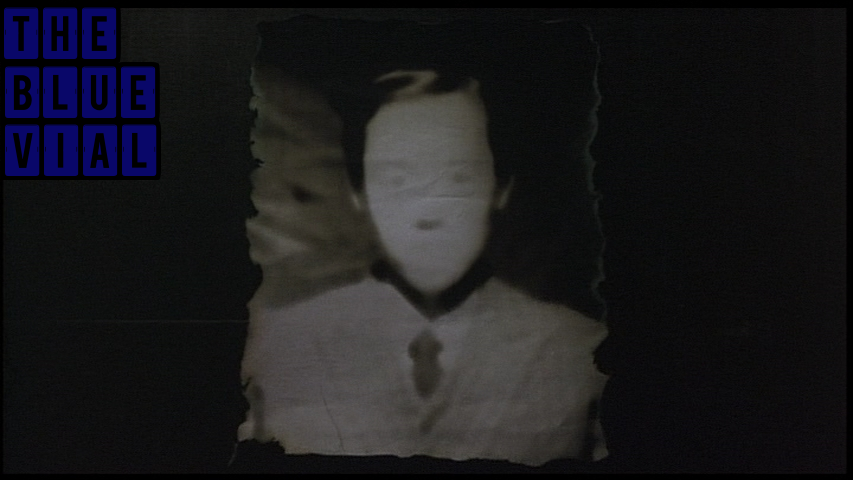On the surface, James Bridges' The Paper Chase (1973) has much in common with the only other Bridges movie I've seen to date, Mike's Murder (1984), insofar as that both are constructed around essentially the same conceit: the obsession one person harbors towards a second who can never be known beyond the level of abstract image, and the accompanying path from naivete to disillusionment blazed by this obsession. The later movie is a great, haunting work (plot: Debra Winger attempts to uncover the truth behind the murder of a casual sexual acquaintance who was also secretly a drug dealer) - not a mystery as much as a personal quest for reconciliation, drifting on a wave of nervous, timid energy and unfolding as stretches of inertia punctuated by bolts of epiphany and high suspense. It's easily the greatest performance I've seen Winger give, and there is an admirable directness to Bridges' approach, an open acknowledgement of the great unknowability hanging over everything and the limits of the material in engaging with it, that gives that movie so much of its wallop. If The Paper Chase, easily the more critically and financially successful film of the two, fails to summon anything close to Mike's power, it's at least in part because its obsession - that of a first year Harvard law student (Timothy Bottoms) with his rigid professor (John Houseman) - is instead worked through with a stifling, distanced rigor; lengthy longshots and disembodied voices are a constant, and not two minutes seem to go by without the feeling of some great scramble to grab the artiest composition available. Unsentimental is a word that pops to mind, but A Film of Surfaces seems to be a little closer to the truth, and it's exactly this sense of remoteness that keeps the movie from ever gaining any significant, resonant traction. In Mike's Murder, unspoken feelings dominated the emotional atmosphere, even after they had indeed been spoken. In The Paper Chase, everyone tells everyone else how they feel and the sentiments seem to get swallowed up in all that pretty air. The best scenes (and they are excellent; at the very least Houseman's accolades were well deserved) are the ones that take place in the classroom, where the 2.35 frame and mannered compositional approach transform the space into something resembling a gladiatorial arena - academic pretensions become stripped away, leaving little more than a mass of bodies waging war in a series of petty, personal victories and defeats.
________________________________________
Also, two first time viewings from one of my favorite directors, Raoul Walsh: Dark Command (1940) carries something of a minor reputation these days, often granted faint praise but made to be carefully mentioned outside of and below the rest of Walsh's 40s work, and that seems about right to me. A big budget picture for Republic, it displays many of the impersonal, uneven qualities one associates with such a determinedly prestigious product - qualities roundly absent from most of Walsh's stunning work for Warner Bros. of the same period - and while it embeds itself deeply in historical facts that are played with fast and loose, there are still pleasures to be found. Though none of the actors turn in their finest hour, the reteaming of Wayne and Trevor only a year removed from Ford's Stagecoach is a lot of fun, if only to watch for the points of convergence and disparity that emerge between the two unique relationships. And though Dark Command is ultimately a lesser film than Pursued, it is actually the more successful experiment with marrying the western milieu with noir stylistics; not bound to cumbersome subtext like the style of the Mitchum film was to its Freudian threads, Command is able to cultivate its moody atmospherics more freely and subtly within Walsh's busy open spaces, evoking a palpable sense of accumulating collective dread.
More notable was Captain Horatio Hornblower R.N. (1951), which struck me immediately as one of the greatest Walsh films I've come across yet. The spectacle of adventure on the high sea and Walshian deep focus breaks down into a personal elegy for the dead and love(s) lost, morphs into an account of loyalty and good humor among professional men on the run: in other words Walsh doing Ford doing Hawks. The patchwork nature of the narrative comes from a screenplay fashioned from three C.S. Forester stories (think Ford's The Long Voyage Home or The Sun Shines Bright), an ideal platform for Walsh to display his flare for fluidly navigating various tones and emotional registers (maybe only LaCava was from the classical Hollywood period was as adept); in this respect Horatio can stand easily beside the likes of The Strawberry Blonde and Gentlemen Jim, but comes off as the more mature film, light on the nostalgia that pervades those great pictures and heavy on the introspection that began tempering Walsh's daring-do as his career entered its later period. Besides mentioning the breathtakingly mounted, almost impossibly intense action sequences, what should also be noted is the careful attention paid to color throughout. At least two moments pop off in the mind for the audacious way Walsh renders the dramatic tensions strictly in terms of color: an early scene with Peck's Hornblower and Alec Mango's rebel leader, where the latter's castle interior becomes bathed in a sinister purple aura as the depth of his mania becomes apparent; and a later scene between Hornblower and Virginia Mayo's aristocratic female passenger, a small culmination of the growing sexual tension between them that sees their outfits reflect the other in a reverse dominant color pattern.
I'm sure there are other depths to be explored here; it's a dense film in many ways and I can't wait to sit down with it again. Essential viewing.
I'm sure there are other depths to be explored here; it's a dense film in many ways and I can't wait to sit down with it again. Essential viewing.






